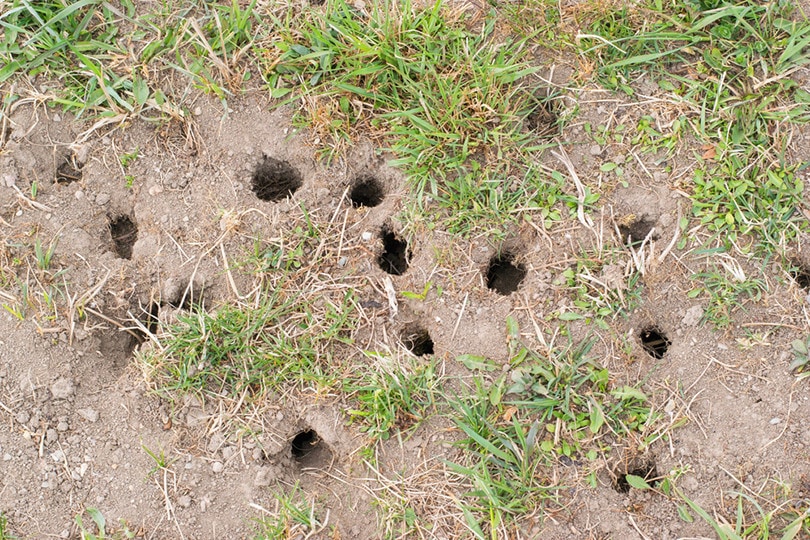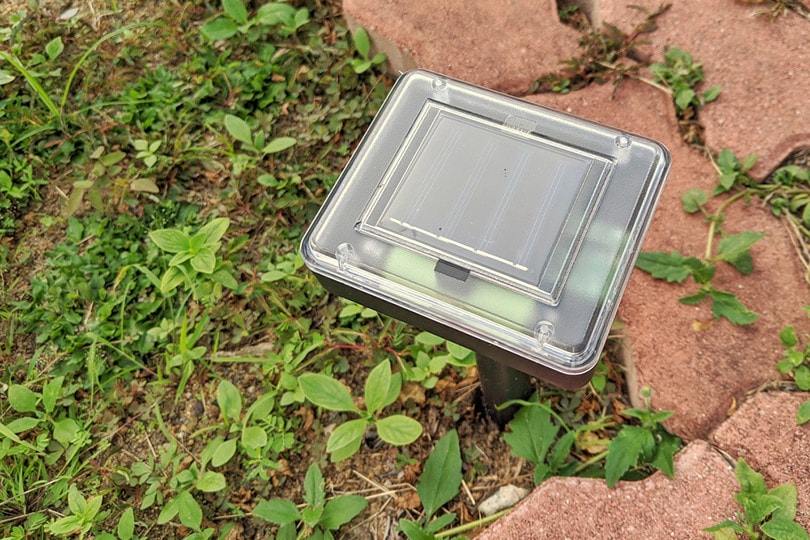How to Get Rid of Voles in Your Yard & Garden: 5 Ways
-

- Last updated:

Voles are small rodents that gather in backyards and gardens, feeding on stems of young trees and plants. These rodents can seriously harm your garden, destroying ornamental plants and vegetables and potentially causing severe damage. If you’re not careful, voles can quickly wreak havoc and cause chaos in your garden. This is why acting fast as soon as you notice a minor sign of vole activity in your yard is essential.
The article below will explain how to spot voles in your garden and the five most effective ways to solve the problem once it appears.

How to Identify Vole Damage

You may start noticing your garden plants are becoming weaker for an unknown reason. After trying to help them continue thriving in perfect conditions, you will soon discover shallow tunnels all over your yard. These tunnels are usually about 2 inches wide, and they are typically very close to the surface for easy access to food. These rodents adore eating grass blades and stems of young plants, and digging shallow holes is the fastest way to reach them safely.
- Partially eaten root vegetables
- Tunnels underneath root systems that cause young trees to lean over
- Eaten flower bulbs
- Chewed up pieces of bark on the base of trees

The 5 Ways to Get Rid of Voles in Your Yard & Garden
1. Castor Oil

Castor oil is a type of vegetable oil that comes from the Ricinus plant. There are multiple health benefits of using castor oil, and one other benefit is that it is an excellent rodent repellent. The smell of castor oil is the most effective way of eliminating voles from your garden since they hate the smell and won’t come anywhere near it. This solution is effective, natural, and entirely safe for humans and the environment. You can either use it from a spray bottle or create a cloud of smoke by burning the castor oil on a wick.
- Completely natural and chemical-free
- Safe around children and pets
- It may cause an allergic reaction in some people
2. Fencing and Gravel
If you are struggling with voles destroying your garden and vegetables, there are a few ways to prevent them from doing so without being destructive yourself. To keep voles from reaching your vegetables and plants, you can add perlite or sharp gravel around the plants to protect their roots and bulbs because voles hate crossing sharp gravel. To keep your young trees safe, you can wrap wire mesh fencing around them. It is crucial to bury the fence at least 6 inches below the ground, so voles can’t dig underneath it.
- Entirely safe
- Non-violent
- Great as a prevention method as well
- Sometimes not effective on its own
3. Chemical Control

While chemical control may be the harshest method on the list, it is also the most effective one when combined with other preventive methods. The most important thing when using chemical control is to acquire a product targeted for voles and read the instructions carefully. When using rodenticides, make sure to protect yourself and those around you by using protective equipment.
If you want to secure your rodent bait, you can create a PVC container to cover the bait. This way, you will ensure that you only target voles while keeping your pets and birds entirely safe. Monitor the container for 10 days, and refill it when needed. For additional bait, you place food near entrances to attract voles.
- Highly effective
- The fastest and easiest way to get rid of voles
- It may be harmful to other animals
- Not safe around children and pets
4. Mouse Traps
While mouse traps are commonly targeted only at mice, they are effective on other rodents, including voles. Peanut butter will be the best bait when trying to trap a vole. Before setting the trap, it is crucial to find the location where there are signs of the most traffic. Find the widest vole runways or a runway with traces of vole urine and feces. The best time to do so would be in autumn and winter, and it is best to do so by placing the trap perpendicular to the vole runway.
- Easy to make and use
- Solves the problem quickly
- Violent
5. Sonic Pest Repellants

Sonic pest repellants are electronic devices that work by emitting high-frequency sounds that repel rodents and other pests. Using sonic pest repellants is a quick and easy method of getting rid of voles safely and naturally. When sonic pest repellants are placed on the ground in your garden, the noises emitted will repel any pests that live beneath the ground level. The noise that these devices emit is not harmful to humans or pets.
- Safe for humans and pets
- Affordable
- Works for a variety of pests, rodents, and insects
- Not guaranteed to be entirely effective

In Conclusion
Hopefully, this article will help you in your battle with voles. These destructive rodents can quickly cause permanent and irreversible damage to your garden, leaving you with half-eaten vegetables and broken stems of plants. If you want to stop worrying about constant vole activity in your garden, try any of these five methods, along with some preventive measurements, and you will surely see some improvement.
- You might also like: 10 Best Portable Camping Toilets – Reviews & Top Picks
Featured Image Credit: Heather Wilde, Unsplash
Contents
